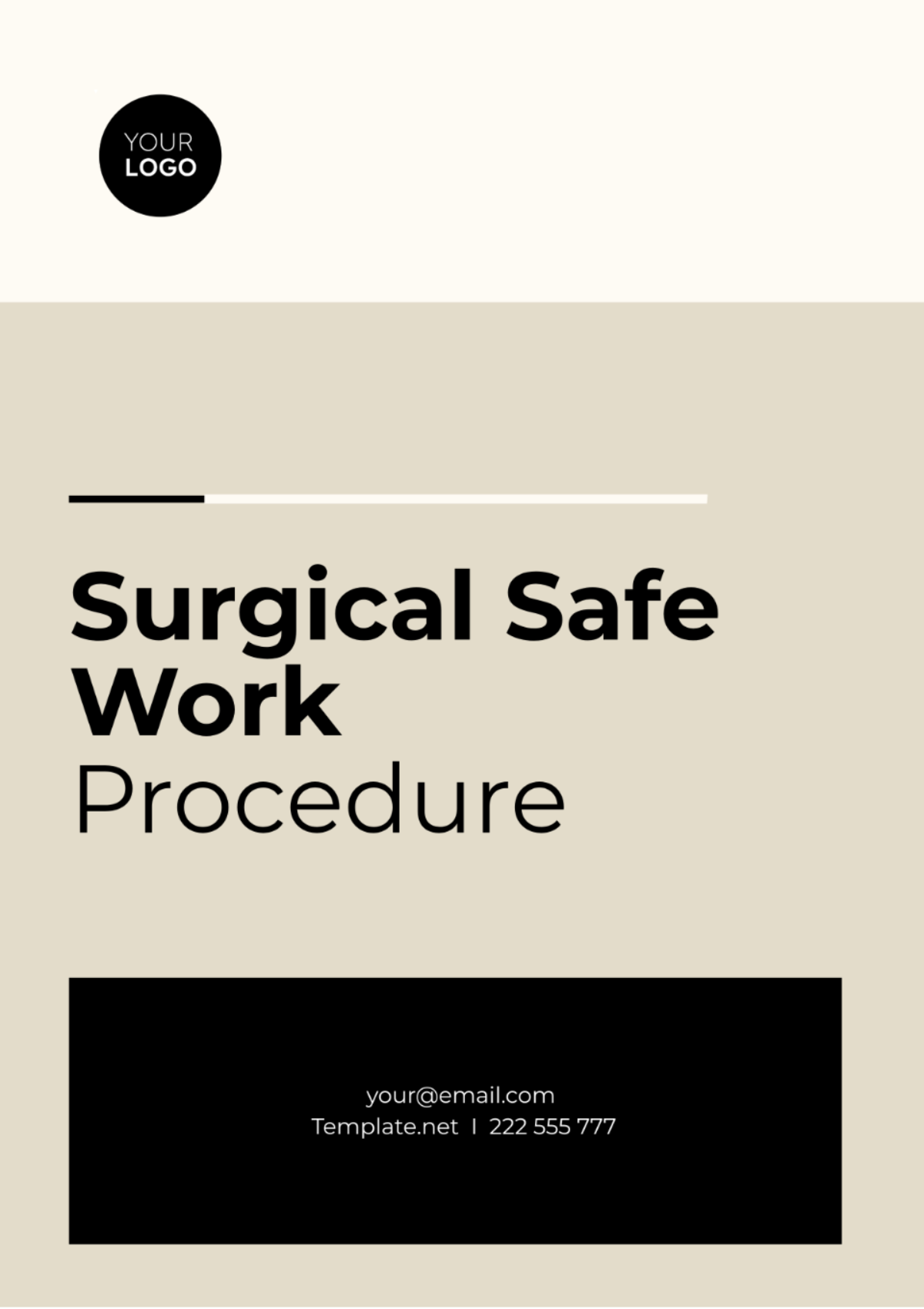Surgical Safe Work Procedure
Introduction:
This Surgical Safe Work Procedure Template provides guidelines for ensuring safety and minimizing risks during surgical procedures within [ORGANIZATION NAME]. It outlines the steps and protocols to be followed by surgical staff to maintain a safe and hygienic surgical environment.
Scope:
This procedure applies to all surgical personnel, including surgeons, nurses, anesthesiologists, and support staff, involved in performing surgical procedures within [ORGANIZATION NAME]. It encompasses pre-operative, intra-operative, and post-operative safety measures to ensure the well-being of patients and surgical team members.
Purpose:
The purpose of this procedure is to establish standardized practices and protocols for maintaining a safe and sterile environment during surgical procedures. By following this template, [ORGANIZATION NAME] can mitigate the risk of surgical complications, infections, and other adverse events, thereby enhancing patient safety and surgical outcomes.
I. Pre-operative Preparation
Patient Assessment: Conduct a thorough pre-operative assessment of the patient's medical history, allergies, and any pre-existing conditions that may impact the surgical procedure.
Surgical Site Preparation: Prepare the surgical site according to established protocols for surgical site preparation and draping.
II. Intra-operative Safety Measures
Hand Hygiene: Perform hand hygiene using soap and water or alcohol-based hand rubs before and after all surgical procedures.
Sterile Technique: Maintain strict sterile technique throughout the surgical procedure, including the use of sterile gloves, gowns, and instruments.
III. Post-operative Care
Wound Care: Provide appropriate wound care and dressing changes following the surgical procedure to promote healing and prevent infection.
Monitor the surgical site for signs of infection, hematoma, or other complications, and report any abnormalities to the attending surgeon.
Patient Monitoring: Continuously monitor the patient's vital signs, level of consciousness, and post-operative recovery in the immediate post-operative period.
IV. Equipment Safety Checks
Equipment Inspection: Conduct pre-operative checks of surgical equipment, including anesthesia machines, surgical instruments, and monitoring devices, to ensure proper functioning and safety.
Emergency Preparedness: Maintain readiness for emergency situations by ensuring the availability of emergency equipment, medications, and trained personnel in the surgical environment.
Review and rehearse emergency protocols, including codes for cardiac arrest, anesthesia emergencies, and other critical events.
V. Appendix
1. Checklist for Sterilization of Surgical Instruments
Refer to the attached checklist for guidelines on sterilization and preparation of surgical tools.
Item | Check for Sterilization | Ready for Use |
|---|
Scalpel | Yes | Yes |
Scissors | Yes | Yes |
Forceps | Yes | Yes |
Additional Reminders and Tips:
Adhere to universal precautions for infection control, including the use of personal protective equipment (PPE) such as masks, goggles, and gowns.
Communicate effectively and collaborate with surgical team members to promote a culture of safety and teamwork in the operating room.
Stay informed about updates and best practices in surgical safety and infection control through ongoing education and training initiatives.
Encourage a culture of safety, accountability, and continuous improvement among surgical staff through regular feedback, recognition of achievements, and open channels of communication.
Prepared by | Organization Name | Department | Date |
|---|
[YOUR NAME] | [YOUR ORGANIZATION NAME] | [YOUR DEPARTMENT] | [DATE] |
Procedure Templates @ Template.net






























